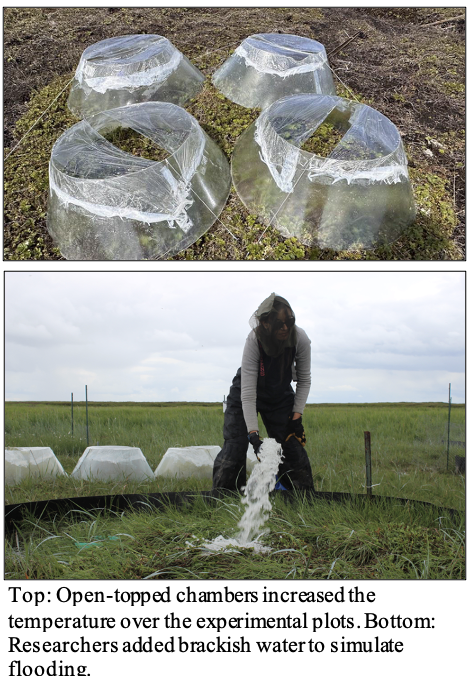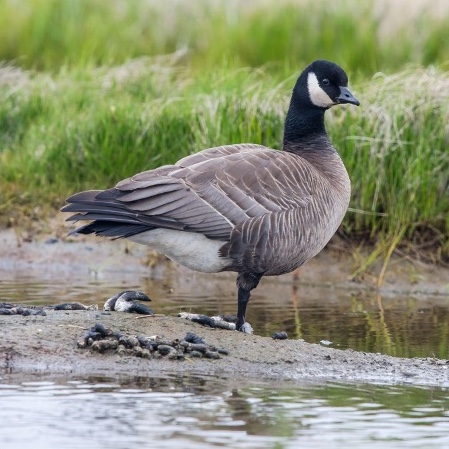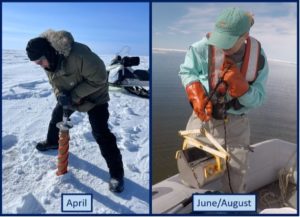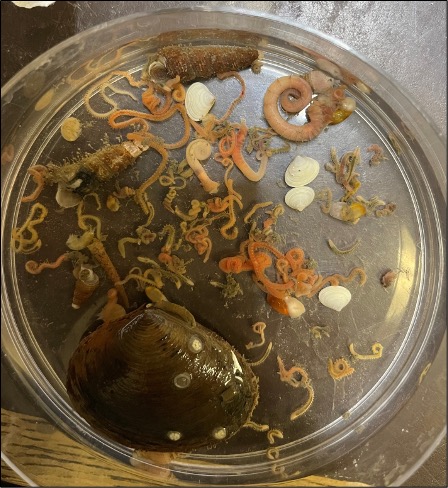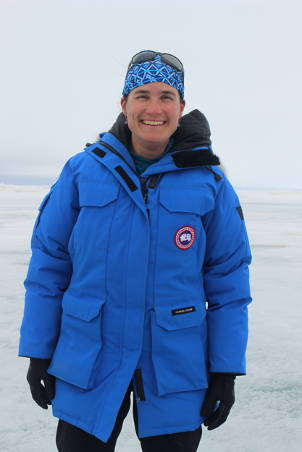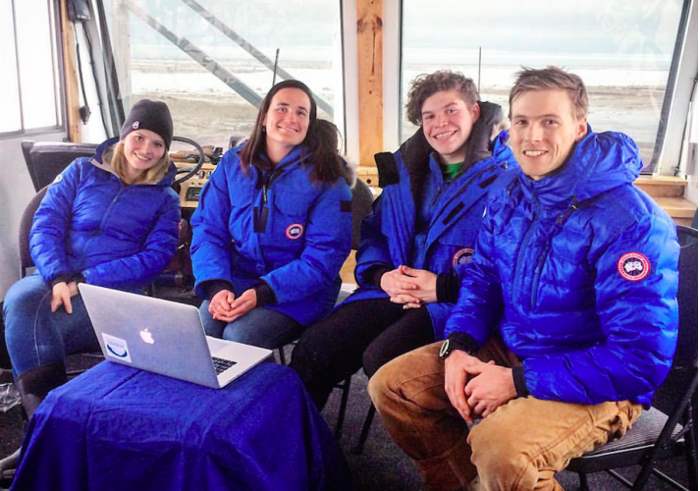The activities are as follows:
- Teacher Guide
- Student activity, Graph Type A, Level 2
- Student activity, Graph Type B, Level 2
- Student activity, Graph Type C, Level 2
- Grading Rubric
In the Yup’ik and Cup’ik Native communities of western Alaska, berry picking is a deeply rooted tradition. Many villages are located more than 500 miles from the nearest road system or grocery store. Fresh fruits and vegetables from other places are flown in by small planes at significant cost. This makes local berries a lifeline for these remote villages.
Salmonberries (also known as cloudberries) are one type of Arctic berry. They are prized for their wonderful taste. Salmonberries are rich in nutrients like vitamin C, antioxidants, and essential minerals. One cup of salmonberries alone can meet a person’s daily vitamin C needs. In addition to humans, these berries provide nutrients to other animals, such as migrating birds, small mammals, and bears.
During berry season, families travel across the land to gather berries, preserve them, and store them for the winter. Families use a vast web of winding rivers to travel by boat to reach their berry picking camps. These western Alaska rivers flow towards the Bering Sea, where freshwater mixes with salty ocean tides.
This mix of saltwater and freshwater shapes the tundra landscape. Tough, salt-tolerant plants, like grasses and sedges, often dominate low-lying areas closest to the sea. Slightly higher ground, just above the reach of the tides, provides a more suitable home for berries. These subtle shifts in water levels play a large role in determining where berries can grow.
Ecologists Karen, Kathy, and Joshua are collaborating with Native communities to learn more about how changes in climate are affecting berry plants. They are studying two major changes already observed under climate change – warming and flooding. Over time, warming and flooding combined could change the entire makeup of plant communities. This will affect whether local families are able to continue their traditions and access this valuable food source.
Alaska’s average temperatures are increasing, more so than other parts of the globe. This warming might help some plants by extending the growing season. With more time and sunlight, salmonberries and other plants may actually grow faster.
Climate change is also expected to increase flooding in some areas of coastal Alaska. Storms are already becoming stronger and more frequent, pushing seawater farther inland. Because of this, flooding events are increasing in frequency. Rising sea levels and storm surges may kill salmonberry plants because these plants are not adapted to having their roots submerged in salty water.
To tease apart the effects of warming and flooding, Karen, Kathy, and Joshua designed a field experiment to simulate climate change. They built clear plastic structures, called open-topped chambers, to trap heat and raise the temperature by about 2°C. These chambers can be thought of as mini time machines, creating small areas that have the expected temperatures of the coming decades. Next, they created flooded plots using brackish, or slightly salty, water that they collected where the fresh river water meets the sea. They used this water to simulate flooding events in the plots. In the end, their experiment had four different types of plots: (1) Control plots with no warming or flooding, (2) plots that were warmed, (3) plots that were flooded, and (4) plots that were both warmed and flooded.
They let these treatments run the full growing season. After that time, the team collected data on salmonberry growth. Karen, Kathy, and Joshua measured both the height and biomass of salmonberry plants in all of the plots. These two measures are good estimates of how many berries the plants will produce – the larger the plant, the more berries it can make. They were very precise in their measurements; in a place where food and traditions are tied to the land, every berry matters.
Note: Cloudberries (Rubus chamaemorus) are regionally known as “salmonberries” in western Alaska, and “Naunrat”, “Atsaq/Atsisaq”, or “Atsalugpiaq” in Yup’ik and Cup’ik. In southeast Alaska, a related but different species, Rubus spectabilis, produces berries that are known as salmonberry in that region. In this activity, we will be referencing Rubus chamaemorus.
Featured scientists: Karen Beard (she/her) of Utah State University, Kathy Kelsey (she/her) of the University of Colorado Denver, and Joshua Leffler (he/him) of South Dakota State University. Written by: Andrea Pokrzywinski (she/her).


